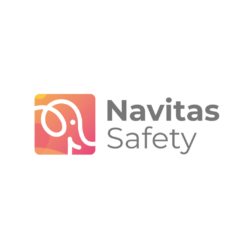Hidden food safety risks in the hospitality industry and how technology can address them
This article highlights hidden food safety risks in the hospitality industry and how technology can effectively address them, providing actionable insights to improve compliance and streamline operations.
Food safety is critical in the hospitality industry, directly impacting legal compliance, guest trust and brand reputation.
Yet, some risks often go unnoticed until they lead to compliance failures, reputational damage, or foodborne illnesses. According to the UK’s Food Standards Agency (FSA), foodborne illnesses cost businesses £9 billion annually, with 2.4 million cases each year. Shockingly, 60% of diners say they would never return to a venue after a poor hygiene experience.
1. Missing records: the silent compliance gap
Forgetting to record delivery temperatures or cooling logs is a common mistake. Guests may never notice these omissions, but they could prove disastrous during an audit or in the event of a foodborne illness.
Why it’s risky:
Records form a critical part of due diligence defence. Missing data can leave businesses vulnerable to non-compliance penalties or legal action as in the event of something going wrong, you would need to prove you did everything possible to prevent it.
Tech solution:
Digital food safety management systems automate record-keeping and ensure accuracy. Tools like Navitas Safety:
- Automate temperature monitoring to further reduce human error.
- Centralise records for easy access.
- Provide alerts and reminders to ensure all tasks are completed on time.
Kirstie Jones, Head of Client Services at Navitas Safety, explains how digital solutions transformed processes for a UK restaurant group:
“Hospitality businesses using digital tools have saved over 22 hours per month on compliance tasks, allowing teams to focus even more so on guest satisfaction.”
2. Poor training: the human factor
Inconsistent or inadequate training often leads to staff errors. Teams may skip safety checks or mishandle food due to a lack of understanding.
Why it’s risky:
Without proper training, staff cannot fully grasp the importance of their role in maintaining food safety, leading to increased risks of contamination or spoilage.
Tech solution:
Interactive, multilingual training modules ensure teams understand their responsibilities. Real-time feedback and coaching reinforce compliance and engagement.
Expert Insight:
“Communicating the ‘why’ behind food safety keeps teams proactive. Food safety isn’t just a box to tick—it’s a team effort,” says Kirstie Jones, an industry expert with extensive experience in food safety consultancy and compliance.
3. Temperature monitoring: a common weak link
Maintaining proper temperature control is essential but often overlooked. Manual checks can miss real time deviations, putting food safety at risk.
Why it’s risky:
Improper temperature monitoring contributes to 25% of food spoilage in hospitality businesses (WRAP, 2022).
Tech solution:
Real-time sensors automate temperature monitoring, providing alerts for deviations and securely logging data. This ensures consistent compliance and reduces waste.
4. Dirty equipment: an overlooked hazard
Improperly cleaned equipment, such as meat slicers or fryers, is a frequent issue. This can lead to contamination and even fire hazards.
Why it’s risky:
Dirty equipment compromises both food quality and safety, damaging guest trust.
Tech solution:
Digital checklists ensure cleaning schedules are followed and recorded. Alerts flag missed tasks, and audit trails validate compliance.
5. Inconsistent practices across locations
For multi-site hospitality businesses, maintaining uniform processes across all locations is a significant challenge. Variations can lead to gaps in compliance and risk exposure.
Why it’s risky:
Inconsistencies in processes make it harder to maintain a high standard of food safety across all locations.
Tech solution:
Cloud-based dashboards offer real-time visibility into compliance across sites. Standardised digital templates ensure uniformity in procedures and records.
Expert view:
“With digital tools, you can sit in one place and monitor compliance across hundreds of locations. If a site falls short, it’s easy to identify and intervene,” notes Kirstie Jones.
The future of food safety in hospitality
Adopting digital solutions for food safety brings tangible benefits:
- Time Savings: Automating processes reduces administrative burdens.
- Enhanced Compliance: Digital systems eliminate errors and inconsistencies.
- Improved Guest Trust: Transparent food safety practices build confidence.
Major brands like Hilton and Marriott are already leveraging these tools to maintain their high standards. Now is the time for all hospitality businesses to embrace technology to ensure compliance and operational excellence.
Transform your food safety processes with navitas safety
Navitas Safety’s digital tools help hospitality businesses streamline compliance, reduce risk, and enhance efficiency. From automating records to real-time monitoring, our solutions empower teams to ace every audit.




